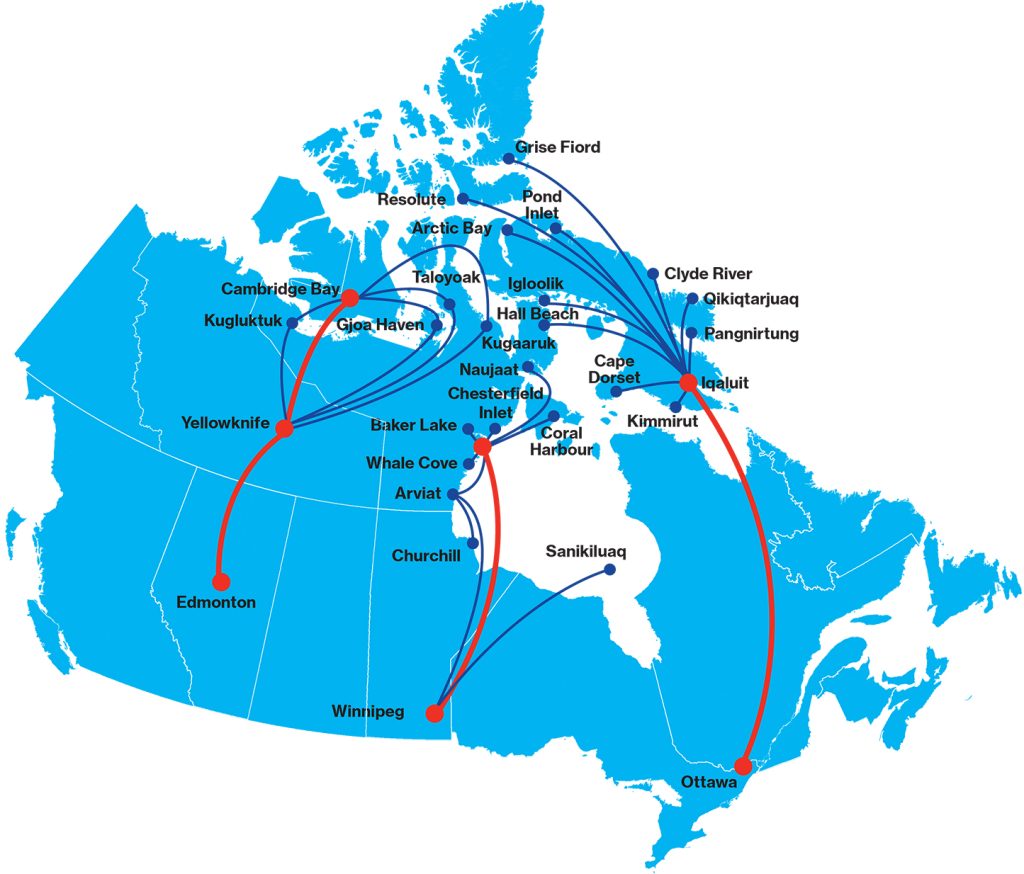
Cool Ideas
Will Robotic Surgery Work in the Canadian North?
The Conference Board of Canada’s Cool Ideas series is designed to spark a nationwide conversation about the technological future of the Canadian North.
We hope to raise awareness about emerging opportunities in a thoughtful and creative manner, weigh the costs and benefits of new systems, and look for ways that promising technologies can address long-standing, pivotal objectives that Northerners have identified as priorities. At the same time, some technologies could make existing challenges worse or introduce new ones. Accordingly, the series also identifies potential challenges and unwanted impacts associated with new technologies.

Delivering healthcare services in Northern Canada has long been a challenge.
A remarkable group of community health nurses and other medical assistants do an excellent job of providing routine, on-site care. And the care delivered there is improving. But the remoteness of many communities means that more serious procedures—not to mention accidents and injuries—need specialists who typically aren’t available at Northern latitudes. In these cases, patients must leave their communities and families to travel, often over hundreds or even thousands of kilometres. For instance, most of Nunavut’s communities must send residents who need acute care or surgery to either Iqaluit, Cambridge Bay, or Rankin Inlet. The most serious cases must go as far south as Yellowknife, Edmonton, Winnipeg, or Ottawa. These trips are expensive. And people who need to evacuate to a Southern hospital for surgery can find themselves alone in a strange city where they are not as comfortable with the language or culture.
But what if they didn’t need to travel?

Prep time

Imagine you are being prepared for a routine surgery. You are trying to rest but can’t get comfortable. The nurse sets up a laptop next to you. After a few clicks the doctor’s face appears on the screen to ask you some questions: How are you feeling today? What have you had to eat or drink in the past 24 hours? Do you have any questions? The call ends and the nurse wheels you into the operating room. Instead of the surgeon, you see an impressive-looking machine with digital controls, flashing lights, various medical devices, and two mechanical arms.
Although it might seem like science fiction, remote surgery is a rapidly emerging technology. Space agencies and militaries are especially interested in developing safe, reliable remote surgery tools. From a technology standpoint, the moment a surgeon is no longer personally handling the surgical tools, distance becomes irrelevant. If surgeons can be five metres away from a patient, they could be 50 metres, 50 kilometres, or even 500 kilometres away.
Experiments have proved that doctors can operate surgical robots remotely over high-speed fibre-optic networks. And the buttonhole-sized incisions mean less pain and faster recovery times. But even in the South, medical professionals are always in the room with the patient, with a surgeon on hand for backup if the equipment fails. For, while rare, there have been deaths and injuries during robotic surgery. Robotic surgery has not arrived in the Canadian North yet. But if it could work there, maybe people could receive treatment sooner and wouldn’t need to leave their communities as often. Perhaps it could save lives and time. And money. Governments face steep and increasing costs for medical evacuations to Southern hospitals. A single medical evacuation in Nunavut, for instance, could cost as much as $22,000, with almost all the costs borne by the territorial government.1
While remote surgery might look like it could improve healthcare for people in remote communities, this is not a given. We can’t close our eyes to its challenges and risks.

A human touch
Remote medical technologies must complement, not to be a substitute for, trusted human services and relationships.
Currently, robotic surgeries require a live surgeon on standby in case something goes wrong. Given that most Northern communities have a medical station rather than a hospital and rarely have an on-site physician—let alone a surgeon—the prospect of implementing robotic surgery, even in the medium term, is extremely unlikely.

Ask Northerners what they want
We can’t assume that people living in the North are willing to trust the steady hands of a machine in order to stay closer to their communities. And Northern governments and healthcare systems should not wait until the technology is viable to test public interest. They need to know what questions people have and what they are concerned about.
Although several telehealth solutions have been piloted and tested in Canada’s remote regions, many people likely think remote surgery technology is still a lifetime away. But robots have been used for surgery in Southern hospitals for two decades. It is vital that Northern governments consult with and inform their constituents about how these innovations can help and what the risks are. Awareness campaigns must be sustained, systematic, and purposeful.
Get online
Ultimately, the effectiveness and safety of remote surgery depends on access to reliable high-speed Internet. Canada’s infrastructure is set up to serve the more densely populated South; most remote locations struggle with poor connectivity and bandwidth. In some places, there is still no connectivity at all.
The Government of Canada has recognized the problem and in March 2019 made yet another budgetary pledge to implement rural/remote broadband—albeit at a level that will not bridge the existing gaps. Such infrastructure is only the first of many requirements for full connectivity. But without it, the prospects for advancing technology in Northern Canada are thin.
However, some major technical barriers to telesurgery may be addressed by 5G Internet service. Nuvitik is pushing for a fibre-optic cabling system to connect Nunavik, Nunavut, and the Northwest Territories. And major tech companies have plans to deliver the Internet to the world with massive deployments of small satellites. Though enhanced connectivity may still be a ways off, we should be aware that game-changing broadband implementations could alter the Northern context overnight.
Recovery
You wake from the surgery before your eyes open. The anesthetic is still wearing off, and the world outside your eyelids seems too bright. So you keep them closed. As your mind starts to clear, the world seems not quite so painfully bright. You open your eyes. The nurse holds a screen showing the surgeon. “Congratulations. The surgery was a success.”
It’s not yet clear if remote surgery would be viable in the North. It’s definitely not a short-term solution. But technology changes quickly these days. It’s vital that Northerners consider the technological innovations just over the horizon.

Here are our recommendations to be ready to react to these innovations should they become available:
- Raise awareness about innovative medical technologies
- Ask Northerners what they want
- Address the North’s connectivity challenges
- Build on existing medical research and expertise
- Form effective partnerships that bring together all the stakeholders who care about Northerners’ health
Remote surgery could be an important part of the future of medical care in the Far North. It is a “cool idea” that warrants further investigation and serious consideration by the medical professions, Northern communities, and governments.

Read the full Cool Ideas impact paper to learn more about the challenges and potential solutions to delivering healthcare in Canada’s remote regions.
Cool Ideas: Remote Surgery: Will Robotic Surgery Work in the Canadian North?
April 6, 2020 • 38-min read
- Leah McDonnell and others, “Non-clinical Determinants of Medevacs in Nunavut: Perspectives From Northern Health Service Providers and Decision-Makers,” International Journal of Circumpolar Health 78, no. 1 (2019): 1571384.

